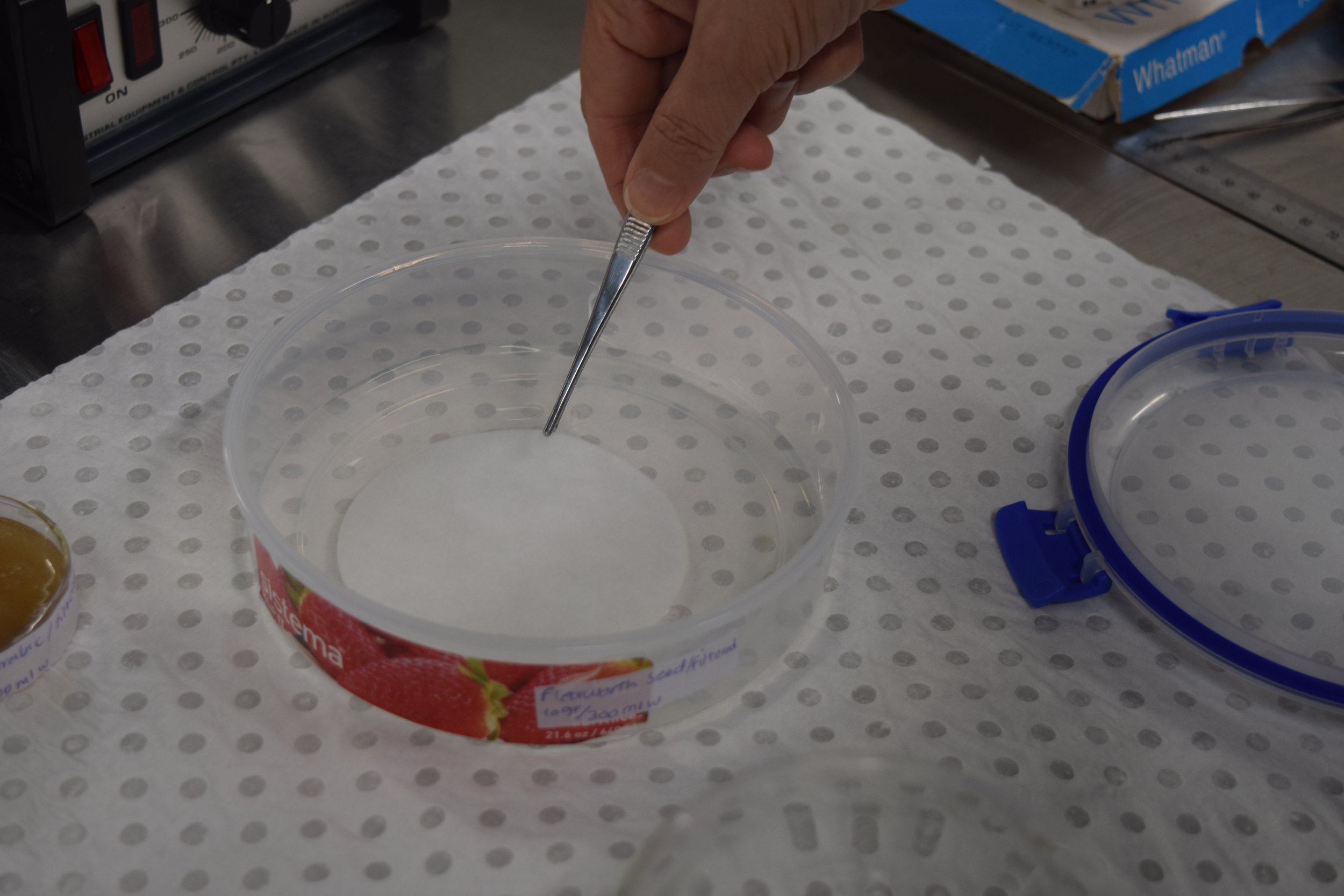FLEAWORT SEEDS (ESPĀGHOL, ESFARZE, QEṬŪNĀ)
Plantago psyllium is mentioned by Biruni (440 A.H./1048 A.D), and the medical benefits of its mucilage are described by Jamāli-ye Yazdi (580 A.H./1184 A.D). Biruni has mentioned the different terms used for psyllium seeds, such as qaṭūnā (قَطونا) in Iraq, habb-al thurraqah (حَبَ الذُرَقَه) in Bahrain, and asphious (اَسْفیوس) in Arabic. According to Biruni, in Persian, it is called aspaghol or espaghol (اَسْپَغول، اِسپَغول), literally meaning horse's ear due to the shape of its plant leaves. This plant grows in different parts of Iran, with the best quality found in Sistān, Kermān, and Khusestān. He quotes Razi (308 A.H./920 A.D)., stating that the best quality plantago psyllium is the one whose seeds sink to the bottom when thrown into water.
Recipes:
The recipes that specifically mention the mucilage of psyllium's seed for paper sizing are found in the following sources: Jowhar-e Simi, Resāle dar Bayān-e Kāḡaḏ Morakkab va Ḥall-e Alvān, Golzār-e Ṣafā (950 A.H./1543 A.D.), Ḵaṭṭ va Morakkab (978 A.H./1571 A.D.), and Resāle dar Bayān-e Tariqe-ye Sāḵtan-e Morakkab va Kāḡaḏ-e Alvān 1(3th A.H./19th A.D.). The techniques stated in the first four sources are the same; they only differ in the duration that the paper is dipped in mucilage. The first two sources use the term espāghol, whereas Golzār-e Ṣafā and Ḵaṭṭ va Morakkab use the term qeṭūnā for these seeds. Hossein Aqili Rostamdari explains the process in his book Ḵaṭṭ va Morakkab.
نوعی دیگر بذر قطونا را در آب ریزند تا لعاب بدهد بعد از آن کاغذ را در لعاب او بگذارند یک ساعت، و بیرون آورند
Pour some psyllium seeds into water to obtain mucilage. Afterward, place the paper in the mucilage for one hour and then remove it.
In Resāleh-ye Joharīyeh (837 AH/1433 A.D.) and Resāle dar Bayān-e Kāḡaḏ Morakkab va Ḥall-e Alvān (13th A.H./19th , the duration that the paper is dipped in psyllium-seed mucilage is shorter. The second source says:
لعاب اِسپغول را نیک صاف سازد و کاغذ را یک زمان در وی بگذارد، بعد از آن خشک کند
Size a sheet of paper with mucilage from fleawort seeds all at once, then let it dry.
Moreover, Simi emphasizes the need to filter the mucilage from psyllium seeds before using it. The recipe reads as follows:
لعاب اسپغول را نیک صاف سازد و کاغذ را یک زمان در وی بگذارد بعد از آن خشک کند
Filter the mucilage from psyllium seeds thoroughly and size the paper with it all at once, then let it dry.
Ali Seyrafi in Golzār-e Ṣafā (950 A.H./1543 A.D.) mentions psyllium mucilage as the most suitable material among six ingredients for sizing, following starch and fish glue. In the first three couplets, he advises the reader to use psyllium seed mucilage as the best material for sizing among the six mentioned.
صفت آهار مختلفه
هست شش چیز دگر ای دلدار که مقوّی است بسان آهار
اولا بذر قطونا باشد که لعابش چو مصفّا باشد
کاغذ انداز در او یک ساعت پس برون آر که یابی راحت
Six things there are, oh cherished heart,
Strengthening paper, playing a vital part.
Firstly, psyllium seeds, where we start,
Their clear mucilage, a work of art.
In its embrace, let the paper take part,
An hour within, then ease impart.
In the last source, Resāle dar Bayān-e Tariqe-ye Sāḵtan-e Morakkab va Kāḡaḏ-e Alvān written in 19th century, we find a recipe advising the use of various sizings, including psyllium seed mucilage, for papers that are blue turquoise in color and where the pen encounters difficulty in moving smoothly. The recipe mentions mixed sizes (See Mixed Sizes).
Experiment:
Pour 300ml of water at room temperature into a glass jar with 10g of fleawort seeds in a ratio of 1:30. Cover and soak for an hour. Filter the solution to extract the mucilage from the fleawort seeds. Pour the mucilage into a glass container. Dip the paper in for an hour. Take out the paper and hang it to dry. After it is completely dried, burnish it with a burnishing tool to obtain a smooth surface.







